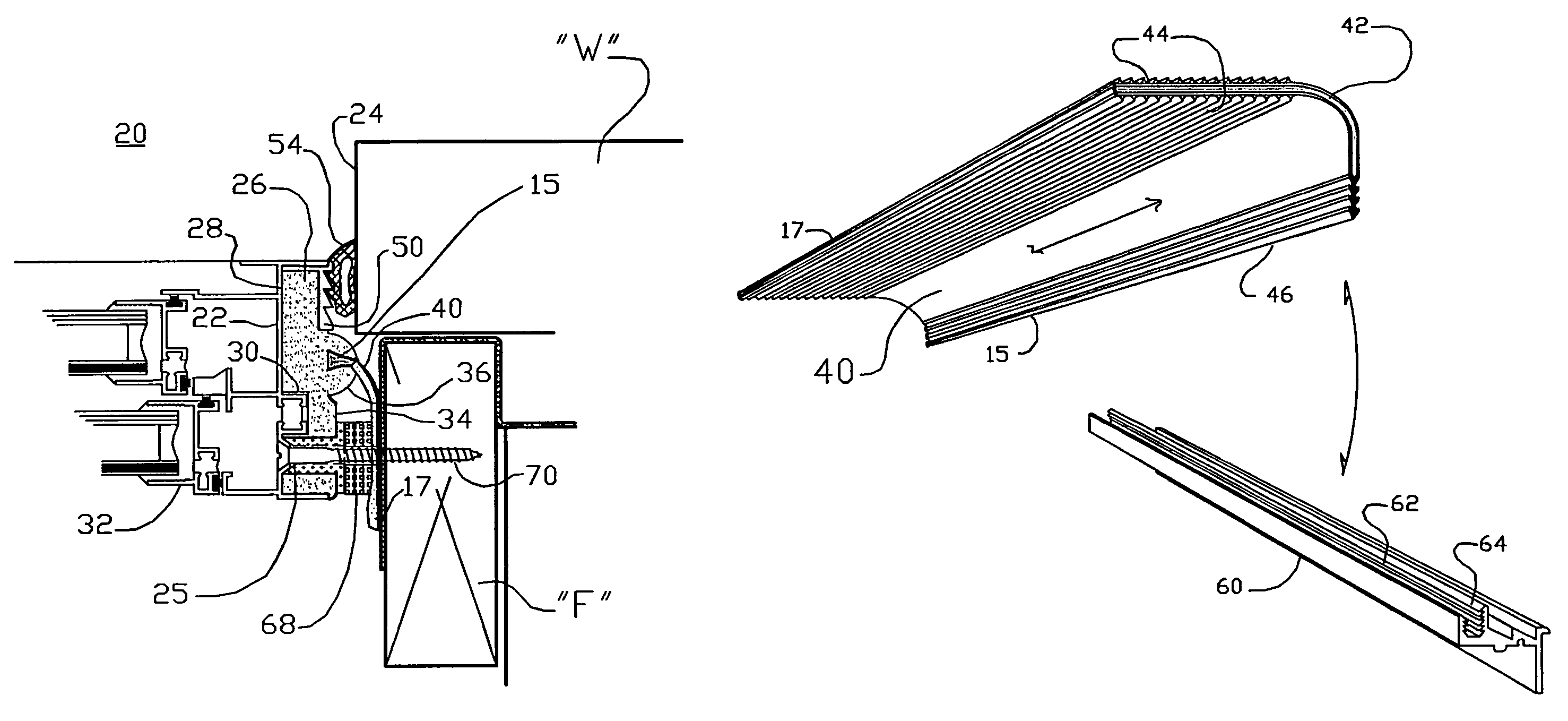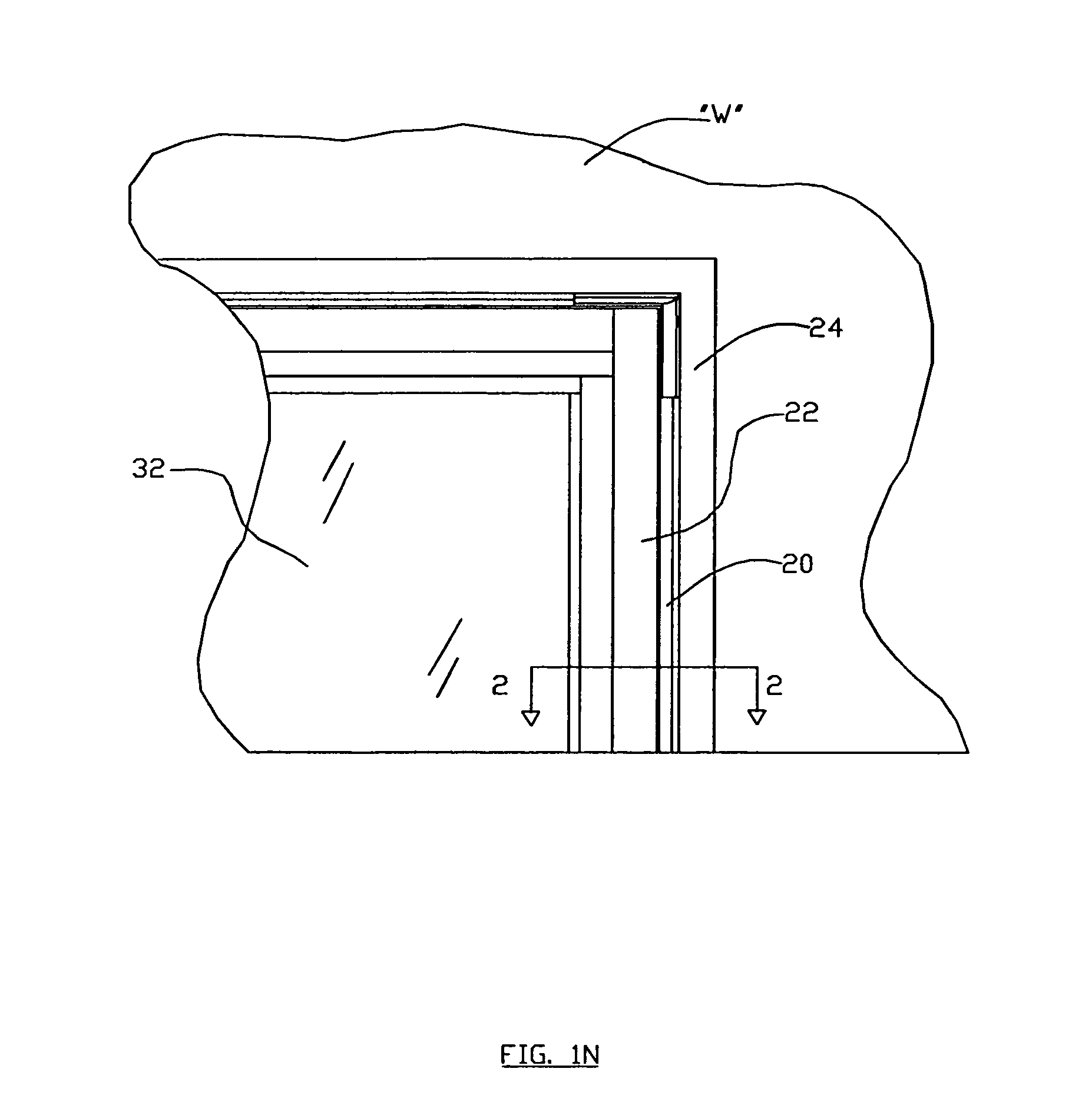Transition assemblies for building opening
a technology for transition assemblies and building openings, applied in the field of building construction, can solve the problems of limited thermoplastic welding options for effective sealing of this material, and achieve the effect of avoiding environmental penetration
- Summary
- Abstract
- Description
- Claims
- Application Information
AI Technical Summary
Benefits of technology
Problems solved by technology
Method used
Image
Examples
first embodiment
[0031]The sealing assembly 20 comprises an extruded, elongated, generally rectilinearly shaped foam body insulating member 26, shown in assembled position in FIG. 2N and in perspective in FIG. 3N. The foam body insulating member 26 is preferably comprised of a closed cell foam of varying densities, and is shaped to provide desired surface contours for mating with supplemental components. The foam body insulating member 26 has a first or inwardly directed enclosure-frame facing side 28 which faces and mates snugly with a channel 30 of a wall-opening facing side of the window / door frame 22, the frame 22 being that which peripherally surrounds and supports a window sash or door 32 therewithin, as represented in FIGS. 1N and 2N. The foam body insulating member 26 also has a wall opening facing side 34 with extrusion-effected seal-engaging shapes as may be seen in FIG. 3N, as well as an elongated, angled “caulking band” attachment strip 27 for secure placement of a “caulking band” theret...
second embodiment
[0036]the “caulk band” is shown as an engagement flange 60, in FIGS. 5N, 6N and 7N. This engagement flange caulk band 60 has a receiving channel 62 therein, machined, formed or co-extruded therewith, having internal ridges 64 extending therealong, as may be best seen in FIGS. 5N, 6N and 7N. Those internal ridges 64 are utilized to fully grasp one longitudinal side of the elongated air fin 40 with the arrowhead ridges 46 thereon, when the air fin 40 is inserted therewithin, as represented 5N, 6N and 7N. An injectable sealant material 41 is preferably disposed around the periphery of the engagement flange 60, as represented in FIG. 5N, to provide a first outside barrier 40 to the multiple inside environmental barriers, that is, the air fin 40 and the elongated fender 68.
[0037]The sealing assembly 20 in one preferred embodiment is established when the receiving frame 22, which holds the window or door 32 therewithin, is secured to the frame “F” of the opening 24 in the building wall “W...
PUM
| Property | Measurement | Unit |
|---|---|---|
| flexible | aaaaa | aaaaa |
| perimeter | aaaaa | aaaaa |
| densities | aaaaa | aaaaa |
Abstract
Description
Claims
Application Information
 Login to View More
Login to View More - R&D
- Intellectual Property
- Life Sciences
- Materials
- Tech Scout
- Unparalleled Data Quality
- Higher Quality Content
- 60% Fewer Hallucinations
Browse by: Latest US Patents, China's latest patents, Technical Efficacy Thesaurus, Application Domain, Technology Topic, Popular Technical Reports.
© 2025 PatSnap. All rights reserved.Legal|Privacy policy|Modern Slavery Act Transparency Statement|Sitemap|About US| Contact US: help@patsnap.com



